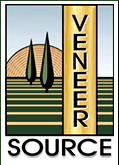







The Architectural Woodwork Institute (AWI) is a not-for-profit organization of manufacturers of architectural woodwork, suppliers to the industry, and design professionals located in the United States and Canada. For over 50 years, AWI and its members have been devoted to:
- the improvement of industry standards,
- technical help for design professionals, and
- research into new and better materials and methods for
engineering, fabricating, finishing, and installing fine architectural
woodwork.
For over 40 years, the Quality Standards Illustrated (QSI) has been providing information necessary for the owner?fs representative to properly specify architectural woodwork. Hundreds of thousands of copies of the QSI have been printed and distributed.
Since its beginning as the Millwork Cost Bureau, the Architectural Woodwork Institute has evolved into a renowned, respected organization. From a simple gathering of like-minded thinkers, a compelling story of growth, transition, perseverance and hard-won successes has unfolded.
In an effort to revitalize the industry, a small group gathered in Chicago on December 12, 1952, to determine if new life could be infused into the existing organization, the Millwork Cost Bureau, or whether a new, more dynamic association should be formed to represent the expanding core of special millwork operators. Their first meeting set in motion a series of gatherings that would lead them down a new and fruitful path.
One month later, in January of 1953, Charles “Chic” Rinehimer, president of Rinehimer Bros. Mfg. Company, Elgin, Illinois, met with Ormie Lance, manager of the National Woodwork Manufacturers Association representing the 31 stock millwork plants in the United States. The conversation drifted in the direction
of conducting a national meeting of custom millworkers, with the suggestion of running the idea past a trade association management firm.
On October 15, 1953, Chairman Rinehimer welcomed 176 representatives of 109 architectural woodwork companies from the United States and Canada, 10 suppliers, representatives from 11 interested trade associations and 9 guest speakers to the opening session of a two-day convention at the Congress Hotel in Chicago.
Concluding the discussions and the recommendation of the Development Committee, a motion was unanimously affirmed, creating the Architectural Woodwork Institute. After the convention adjourned, the newly elected directors met to select the first slate of officers: Rinehimer as president; Claude Twiellenmeier as first vice president; Charles Fischer as second vice president; William Otis as third vice president and Elmer Root as treasurer.
Moments after the officers were selected, Robert Hoe, Jr., the director from Poughkeepsie, handed the new treasurer his company check for the first year?fs dues, and the Architectural Woodwork Institute of America was on its way.
Shortly thereafter, AWI was incorporated as a non-profit organization under the laws of the state of Illinois. Articles of Incorporation were recorded on December 17, 1954.
Chairman Rinehimer took his dreams on the road, helping to form regional chapters throughout the country. Membership in AWI increased as a result and a dual membership package for AWI and MCB was developed. Cost Book A was revised with plans set in motion to form an upgraded estimators correspondence
course.
AWI has always been a hands-on organization, governed by a member board, slate of officers and a set of bylaws. Truly an industry association run by members, AWI programs and policies are developed and monitored by committees, and administered by an executive director and a national headquarters staff.
Elected officers are the primary governing body of the organization. The president accepts the gavel for a one-year term following several years of service in board and vice president slots.
In the late 1990s a management consulting group was enlisted to study the Institute?fs governance structure. A member task force was appointed to work with the consulting team and together they studied and evaluated board design, nomination processes, committee structure and roles and responsibilities.
At first the task force?fs recommendations were rejected by the board, requiring further study and discussion, and then approved in the spring of 2001, reducing the size of the board to eleven members, eliminating the Executive Committee, and establishing a Development Council.
The new Development Council was charged with representing and retaining existing members, attracting new members, promoting AWI and the industry, and providing effective chapter and national communications. The eighty-five-member council includes representatives from each AWI chapter, affiliate, supplier and industry representatives, all committee chairpersons and AWI past presidents.
The foundation of the association is built on the idea of sharing knowledge. It is prevalent in many forms – formal programs, seminars and workshops, networking, committee involvement and publications.
For over 50 years AWI and its members have been devoted to fostering professionalism throughout the industry. A distinct part of the whole, each member firm today garners prestige through the AWI logo, Quality Standards, Quality Certification Program, Design Solutions and other important technical publications.
AWI Chapters are integral to networking opportunities, sharing of resources, and overall association operations. Chapters are the bedrock upon which the association operates. The chapter structure is important because it provides influence, information and a united front on local levels, bringing a common voice to the national organization on important industry issues. Chapters also provide the opportunity to conduct grass roots educational programs for woodworkers and the design community. Plus, they bring together woodworkers in a local area, giving them the opportunity to share ideas and information specific to their region.
Although the forest contains 40,000 different species of wood-30% of the earth's surface is covered with forest, 10.5 million square miles of which are managed forests - there are only 600 species that can be used commercially. Of these, only 28 species cover around 75% of the industrial demand for wood, and then only a small amount of these can be utilized for veneer production.

The Veneer Source • 400B Pittman St, Orlando, FL 32801
Phone: 407-423-2252 • Fax: 407-423-1566 • sales@veneersource.com
Phone: 407-423-2252 • Fax: 407-423-1566 • sales@veneersource.com